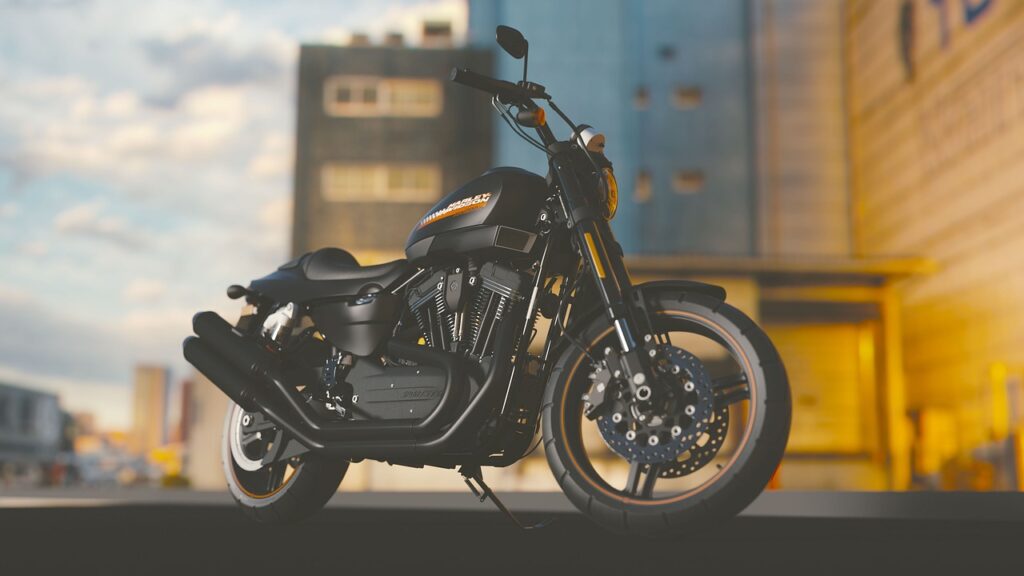
Larry Page, the co-founder of Google, stands as a titan of the digital age, a visionary whose innovations have irrevocably reshaped our world. With a net worth of $161 Billion in 2024, according to Forbes, his financial prowess is undeniable. However, unlike many billionaires whose wealth translates into an ostentatious display of exotic supercars, Page’s automotive choices and transportation investments tell a far more nuanced and, indeed, compelling story. His garage, and by extension, his broader portfolio of mobility assets, reflects a deep-seated commitment to sustainability, cutting-edge technology, and a forward-thinking ethos that propelled Google itself to unparalleled success.
Page’s approach to personal transportation is a testament to his values, underscoring a belief in alternative energy solutions and a conscious effort to minimize his carbon footprint. His collection is less about horsepower and prestige, and more about purpose and pioneering the next frontier of movement. From the humble hybrid that serves as his daily driver to significant investments in electric vehicle manufacturers and even ventures into the realm of flying cars, Page’s choices are not merely personal preferences; they are strategic decisions that align with broader trends championed by tech leaders embracing greener, more innovative transportation solutions.
This deep dive into Larry Page’s unique collection of vehicles and transportation investments reveals a man whose vision extends far beyond search algorithms. It offers a fascinating glimpse into how a tech mogul of his stature navigates the intersection of immense wealth, personal values, and the relentless pursuit of technological advancement. We will explore the specific vehicles that comprise his personal fleet, examining how each choice reflects his commitment to eco-friendly designs, innovation, and his profound influence on the future of transportation.

1. **The Toyota Prius: A Daily Drive Reflecting Core Values**Perhaps the most telling vehicle in Larry Page’s collection, and certainly his most often-cited daily driver, is the Toyota Prius. This hybrid car, renowned for its fuel efficiency and low emissions, stands in stark contrast to the high-performance luxury vehicles typically associated with individuals of Page’s immense wealth. His selection of the Prius isn’t merely a practical choice; it embodies his steadfast commitment to environmental sustainability and his profound interest in innovative technology, two values that have been foundational to Google’s own ethos.
Page’s fondness for the Toyota Prius also extends beyond personal preference, playing a pivotal role in one of Google’s most ambitious undertakings: the autonomous driving initiative. When the time came to select a vehicle for testing self-driving technology, Page, alongside Sergey Brin, chose the unassuming Prius. This decision underscored the belief that even everyday vehicles could be transformed into platforms for groundbreaking innovation, aligning with Google’s mission to utilize technology to solve complex global challenges, including traffic congestion and road safety.
Under Page and Brin’s visionary leadership, Google engineers were tasked in early 2009 with achieving fully autonomous driving without human intervention across ten challenging 100-mile routes in California. This audacious project, which commenced well before any state had even established regulations for driverless car testing, ultimately laid the groundwork for the creation of Waymo, a leader in autonomous vehicle technology. The Prius, therefore, is not just a car in Page’s garage; it’s a symbol of pioneering spirit and the practical application of futuristic ideals.
Interestingly, reports suggest that both Larry Page and Sergey Brin’s Priuses notably lack Android Auto, Google’s proprietary in-car connectivity system. This absence has sparked discussions and amusement about the perceived irony of these tech moguls driving a car that doesn’t fully integrate with their own company’s innovations. Nevertheless, Page’s consistent choice of the Prius reinforces his dedication to reducing carbon footprints and promoting eco-friendly advancements, reflecting a down-to-earth and forward-thinking approach despite his billionaire status.
Read more about: The Car You Drive Is a Social Statement: Decoding Your Identity and Impact on the Road
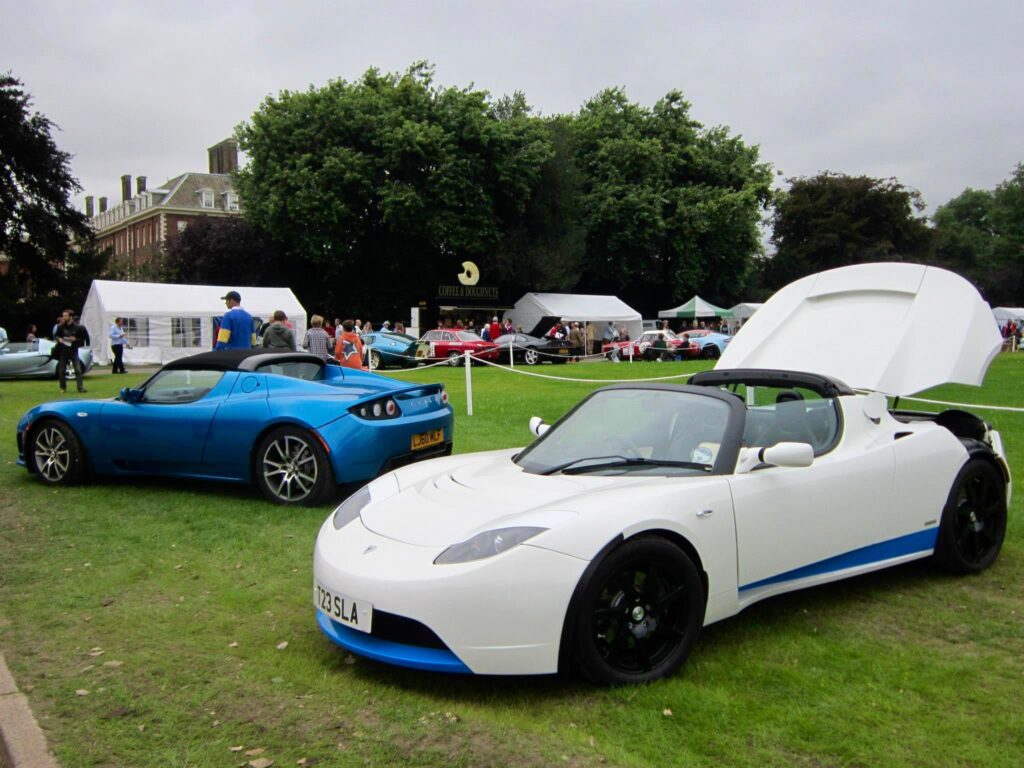
2. **The Tesla Roadster: An Early Bet on Electric Innovation**Long before electric vehicles became mainstream, Larry Page made a significant statement with his acquisition of a Tesla Roadster in 2008. This sleek, high-performance vehicle was one of the first all-electric sports cars produced by Tesla, Inc., and Page’s purchase symbolized more than just an appreciation for cutting-edge automotive technology. It epitomized a visionary outlook, hinting at his early recognition of the impending shift towards sustainable and environmentally friendly transportation.
Page’s admiration for Nikola Tesla, whom he has publicly stated he viewed as a hero, likely influenced this early investment and personal acquisition. The Roadster, capable of accelerating from 0 to 60 mph in just under four seconds and boasting a range of approximately 244 miles on a single charge, showcased the undeniable potential of electric vehicles to match and even surpass the capabilities of traditional gasoline-powered cars. It was a tangible demonstration of his commitment to environmental innovation and a greener future driven by technological advancements.
His commitment to Tesla was further evidenced by a substantial $40 million investment in Tesla Motors. This financial backing, coupled with his ownership of the Roadster, cemented Page’s role as an early champion of electric mobility. While he hasn’t been frequently spotted driving the Roadster around California lately, its presence in his collection underscores his deep-seated belief in the transformative power of electric propulsion and renewable energy, aligning perfectly with his broader vision for sustainable technology.
An infamous anecdote from Tesla’s early days involves a test drive Page took with fellow Google co-founder Sergey Brin and Elon Musk in an early version of the Roadster. During this memorable, if awkward, ride, the car famously struggled to exceed 10 mph. Musk, despite the car’s shortcomings at that moment, assured them it could go much faster, later describing the experience as “the world’s worst demo.” Yet, Page and Brin were sufficiently impressed by the nascent technology and Musk’s vision to continue their support for Tesla, highlighting Page’s ability to see past immediate imperfections to the revolutionary potential within.
Read more about: From Humble Beginnings to Electric Dreams: A Deep Dive into Elon Musk’s Electrifying and Eclectic Garage

3. **The Mercedes-Benz C-Class: A Nod to Traditional Luxury and Professional Utility**While Larry Page’s automotive preferences are heavily skewed towards sustainable and eco-friendly vehicles, his garage is not entirely devoid of traditional luxury. Among his collection of German sedans, the Mercedes-Benz C-Class stands out as an entry-level luxury choice. This vehicle represents a pragmatic aspect of his car collection, acknowledging that certain professional or personal engagements might warrant a more conventional, yet sophisticated, mode of transport.
The Mercedes-Benz C-Class, with its 3.0-liter V6 powertrain producing 228 horsepower and 221 lb-ft of torque, coupled with a 7-speed automatic transmission, offers a blend of performance and comfort. It achieves 0-60 MPH in 7.1 seconds and has a top speed of 130 MPH. These specifications highlight a vehicle designed for reliable, refined travel, providing the smooth experience expected from a premium German marque, even if it is not an electric or hybrid model.
While specifics about Page’s usage patterns for the C-Class are not extensively documented, it is a common practice for individuals of his stature to utilize such luxury vehicles for both personal and professional engagements. This could include attending high-profile tech conferences, investor meetings, or other significant gatherings where a vehicle that projects a sense of established luxury and professionalism might be deemed more appropriate. It suggests a balance in his fleet, where cutting-edge sustainability coexists with a recognition of traditional executive transport needs.
Its presence indicates that while Page is a fervent advocate for future technologies, he also appreciates the established engineering and comfort offered by classic luxury brands. This choice demonstrates a practical side, ensuring he has versatile options for various situations, whether it’s navigating the daily commute in his Prius or arriving at an important business function in a vehicle that signifies understated elegance and German engineering prowess. It’s a testament to the fact that even visionaries appreciate reliability and a certain level of comfort.
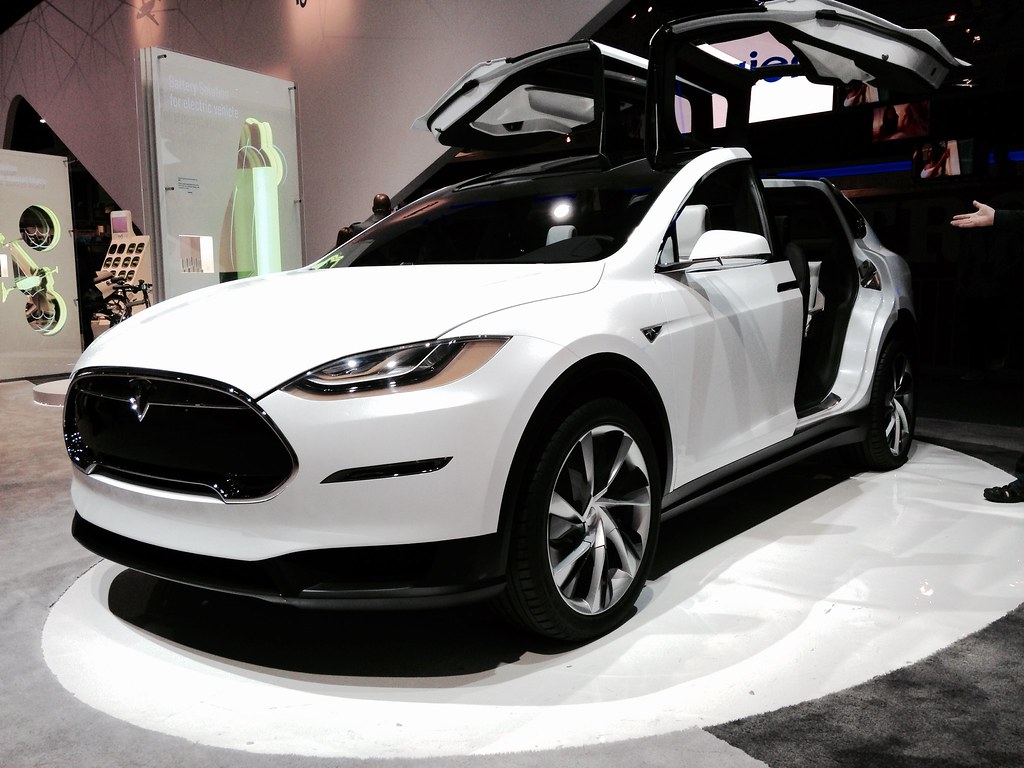
4. **The Tesla Model S: Doubling Down on the Electric Revolution**Larry Page’s commitment to the electric vehicle revolution extends beyond his early adoption of the Roadster, as evidenced by his ownership of a Tesla Model S. This second electric car from the brand in his collection further solidifies his belief in Tesla’s vision and the potential of electric vehicles to shape the future of transportation. His support for Tesla is not merely financial; it’s a profound endorsement of Elon Musk’s ambitious goals and the company’s trajectory.
Page’s unwavering conviction in Musk’s endeavors is particularly striking. According to Yahoo Finance, Page has publicly stated that he would rather give his fortune to Elon Musk than donate it to charity, an assertion that powerfully indicates his strong belief in Musk’s vision for Tesla and its broader impact. This statement, while perhaps hyperbolic, underscores the depth of his conviction that Tesla’s work is critical for a sustainable future.
The Tesla Model S, with its impressive specifications, including an electric motor powertrain, 416 horsepower, 443 lb-ft of torque, and a 0-60 MPH time of 4.4 seconds, demonstrates the rapid advancements in electric vehicle technology since the Roadster. Its top speed of 130 MPH and enhanced range make it a highly practical and high-performing electric sedan, suitable for a tech mogul who values both efficiency and cutting-edge performance in a sustainable package.
Page’s investment in and ownership of Tesla vehicles reflect his broader vision for sustainable technology. His public statements and actions clearly indicate his belief in the transformative potential of electric vehicles to significantly reduce carbon footprints. This alignment is not just personal; it resonates deeply with Google’s own extensive initiatives in renewable energy and overall sustainability efforts, making his choices both a personal preference and a powerful business statement for a greener planet.
Read more about: The Future Is Code: 14 Transformative Automotive Apps Set to Dominate the Next Decade
5. **Electric Motorbikes: Off-Road Adventure with a Green Conscience**Extending his commitment to sustainable transportation beyond four wheels, Larry Page also embraces electric motorbikes, specifically owning several models of the Zero X. Produced by Zero Motorcycles, the Zero X is an electric motorcycle designed primarily for off-road use, known for its lightweight construction and agile performance. This choice highlights Page’s diverse interests in eco-friendly mobility solutions, even for recreational and adventurous pursuits.
The Zero X, weighing around 140 pounds, offers a distinct advantage for off-road riding, where maneuverability and ease of handling are paramount. Its electric powertrain ensures quiet operation, minimizing noise pollution often associated with traditional gasoline-powered off-road vehicles. This aligns with Page’s consistent preference for technologies that reduce environmental impact while still delivering performance and utility.
Page’s ownership of electric motorbikes signifies a comprehensive commitment to sustainable options across various forms of transportation. It suggests that his dedication to a greener future isn’t limited to daily commutes or executive travel but extends to personal hobbies and leisure activities. The Zero X represents a blend of high-tech engineering and environmental responsibility, perfectly suited for a visionary who seeks innovative solutions in every facet of life.
By incorporating electric motorbikes into his collection, Page demonstrates a forward-thinking approach to all aspects of personal mobility. It’s a clear indication that he views electric propulsion not as a compromise, but as a superior alternative capable of delivering thrilling experiences without the environmental drawbacks of fossil fuels. This further underscores his role as an influential advocate for sustainable technology, leading by example across his entire vehicle portfolio, both on and off the beaten path.
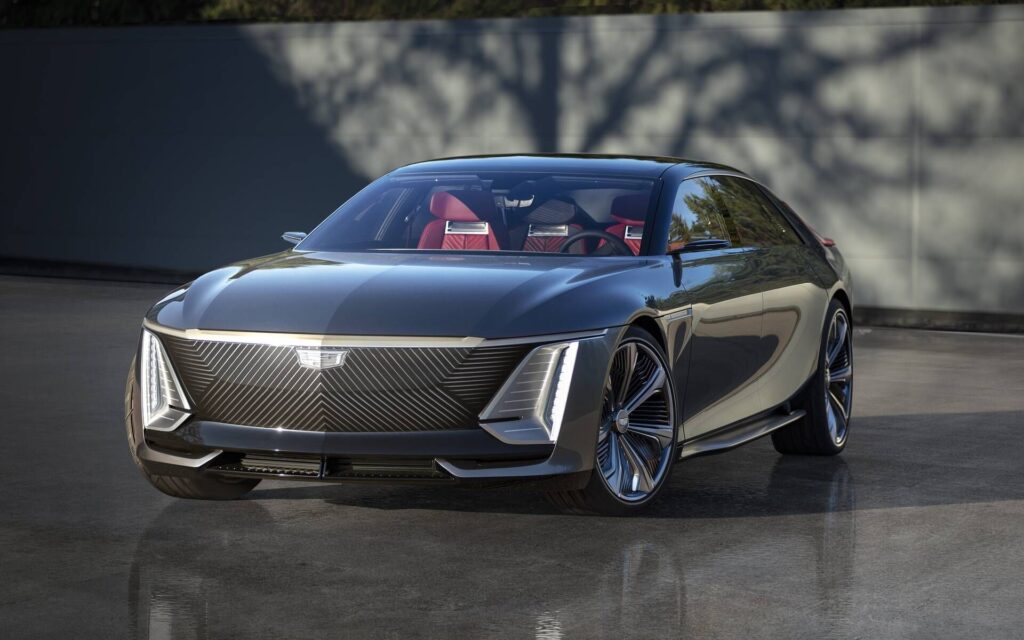
6. **Kitty Hawk: Pioneering the Future of Personal Air Travel**Larry Page’s commitment to shaping the future of transportation extends ambitiously into the realm of flying cars, with his significant investments in companies like Kitty Hawk. This venture represents a bold leap towards urban air mobility, envisioning a world where electric vertical takeoff and landing (eVTOL) aircraft can revolutionize travel by offering solutions to urban congestion. Through Kitty Hawk, Page gained access to and supported the development of three distinct vehicles: Cora, Flyer, and Heaviside, each designed with unique applications for personal air travel.
Cora, a two-seater flying taxi, was conceived for urban air mobility, aiming to provide quiet and efficient short-distance transport within cities. The Flyer, resembling a large drone, was designed for recreational use, enabling low-altitude flights at speeds around 20 mph, demonstrating the diverse possibilities Page saw for personal aviation. Further illustrating his vision, Heaviside, a single-seater eVTOL aircraft from Opener (a company Page acquired), emphasized sustainability through its electric propulsion systems, aligning perfectly with Page’s eco-friendly ethos in all his endeavors.
Page’s financial commitment to Kitty Hawk was substantial, with reports indicating an investment of at least $330 million, often channeled through a shell company. This significant backing underscores his serious dedication to overcoming the immense technological and regulatory challenges associated with developing viable flying cars. His involvement transcends mere funding; it provides crucial credibility and strategic direction to these companies, accelerating the potential for humanity to move beyond congested roadways and into the third dimension of transport.

7. **Zee.Aero: Another Leap into Aerial Innovation**Complementing his investment in Kitty Hawk, Larry Page also made a substantial commitment to Zee.Aero, another ambitious flying car venture. Having funded Zee.Aero since its inception in 2010 with over $100 million, Page demonstrated a dual-track approach to exploring and advancing the capabilities of personal air travel. This parallel investment strategy highlights his broad and sustained interest in the sector, indicating a comprehensive vision for how these futuristic vehicles could reshape our mobility infrastructure.
While specific details regarding Zee.Aero’s individual vehicle developments are not as publicly detailed as Kitty Hawk’s projects, its very existence as a recipient of Page’s substantial capital speaks volumes. It reinforces his belief that multiple avenues of research and development are necessary to unlock the full potential of urban air mobility. His readiness to back nascent technologies with significant resources illustrates a willingness to embrace risk in pursuit of revolutionary solutions, a characteristic trait of his entrepreneurial journey.
Page’s patronage of Zee.Aero, alongside Kitty Hawk, positions him as a pivotal figure in the nascent flying car industry. These investments are not isolated whims but strategic decisions that align with a broader philosophy of innovation and societal improvement. By fostering competition and exploration within this high-potential field, Page effectively accelerates the pace of development, bringing the dream of everyday personal flight closer to reality and cementing his legacy as a true pioneer in the future of transportation.

8. **Private Jets: The Executive Fleet for Global Reach**For a figure of Larry Page’s stature, with vast global influence and demanding commitments, a private jet fleet is an indispensable asset rather than a mere luxury. This sophisticated collection of aircraft provides the unparalleled speed, flexibility, and privacy essential for navigating his immense business empire and philanthropic initiatives across continents. It ensures he can respond efficiently to urgent demands, attend high-stakes meetings, or visit critical development sites without the constraints of commercial travel.
The foundation of this fleet was established in 2005 when Page and Sergey Brin acquired a Boeing 767-200 for approximately $15 million, subsequently investing an additional $10 million to transform its interior into a luxurious space designed for long-haul comfort and productivity. This significant customization underscores the need for an optimal working and resting environment during extensive travels. The fleet expanded further in 2007 with the addition of two Gulfstream V jets and a Boeing 757, greatly increasing their global reach and capacity.
To manage this growing air armada, Page, Brin, and Eric Schmidt invested $33 million in 2011 to renovate the historic Hangar One at Moffett Field in Mountain View, California, repurposing it into a state-of-the-art base. Further illustrating this strategic investment in infrastructure, plans were announced in 2011 for an $82 million private terminal at Mineta San Jose International Airport, dedicated solely to Google’s founders. These initiatives highlight how Page views his private jets not just as transport, but as critical tools for maintaining the operational efficiency and strategic advantage required of a global tech leader.

9. **The Dornier Alpha Jet: A Fighter with a Strategic Purpose**Among Larry Page’s diverse transportation assets, the acquisition of a Dornier Alpha Jet in 2011 by Page, Brin, and Eric Schmidt, presents one of the most unique entries. While a military aircraft, its purpose within their portfolio was not for combat, but rather as a strategic component in securing essential access to Moffett Field, a historic airfield in Mountain View, California. This move was part of a broader, pragmatic strategy to establish a robust private air base crucial for their expanding private aviation operations.
The Dornier Alpha Jet itself is recognized for its agility and performance in training and light attack roles, offering capabilities beyond typical civilian aircraft. Its presence in the Google founders’ collection underscores an intricate logistical and historical connection to Moffett Field, which provided a unique opportunity to house and manage their burgeoning fleet of private jets. This acquisition demonstrates a different facet of Page’s approach to resources, where strategic infrastructure enablement takes precedence.
This investment extended beyond the jet itself, encompassing a $33 million commitment to renovate Hangar One at Moffett Field, transforming the historic military airship structure into a modern base for their aircraft. The Alpha Jet, therefore, symbolizes their extensive involvement in developing an infrastructure that supports their global activities, revealing a pragmatic and strategic mind focused on efficiency and control over critical resources, ensuring seamless operations for their multifaceted global ventures.
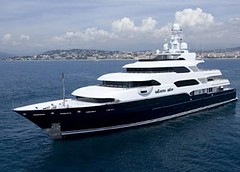
10. **The Luxury Yacht ‘Senses’: A Billionaire’s Retreat, Now History**While Larry Page is often associated with sustainable and innovative transportation, his past ownership of the luxury yacht ‘Senses’ offered a glimpse into a more traditional side of billionaire extravagance. Acquired in 2011 for an estimated $45 million, ‘Senses’ was a magnificent 194-foot vessel, representing the pinnacle of maritime luxury and serving as an unparalleled private retreat away from the demands of the tech world. Its opulent interior, designed by Philippe Starck, provided a sophisticated and private sanctuary for Page, his family, and guests.
‘Senses’ was famously equipped with an array of lavish amenities designed for ultimate leisure and entertainment. These included a helipad, a private beach club featuring a jacuzzi and sunbeds, and expansive indoor and outdoor dining areas. Accommodating up to 12 guests in luxurious suites, including a master suite with a gyro-stabilized bed, the yacht also boasted a well-stocked toy box with high-speed tenders and water sports equipment, ensuring every conceivable comfort and recreational possibility on the high seas.
However, Page’s chapter with ‘Senses’ concluded in 2021 when the superyacht was reportedly sold to an undisclosed buyer. This divestment suggests a shift in his personal priorities or a rationalization of his extensive assets. While its time in his portfolio showcased a capacity for ultimate luxury, its eventual sale highlights the dynamic nature of asset management for tech billionaires, where even the most extravagant possessions can be transient as focus shifts to new ventures or consolidated missions.
Larry Page’s collection of vehicles and transportation investments presents a compelling narrative of a visionary billionaire whose choices are anything but conventional. From the environmentally conscious Toyota Prius, reflecting his grounded commitment to sustainability, to the ambitious pursuit of flying cars that promise to redefine human mobility, his portfolio is a testament to a mind constantly pushing the boundaries of what’s possible. It underscores a strategic foresight that values innovation, efficiency, and a profound belief in technology as a catalyst for transformative change, whether on land, in the air, or across the oceans. Ultimately, Page’s journey through diverse modes of transport is a powerful microcosm of his broader influence, shaping not just the digital world but also the very future of how we move.

